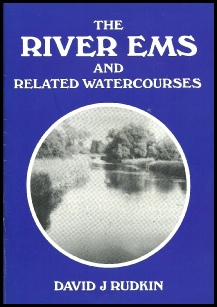
WESTBOURNE
A village history in West Sussex
PUBLICATIONS
Westbourne History Group
Bygone Series
No2. Village Schools 1819-
No9. The Bastards of Westbourne
No10. Westbourne’s War 1939-
No15. The Village Schools 1810-
No16. Westbourne and the Great War
No17. Tradespeople of Westbourne
Numbers 1 to 5 inclusive out of print, further information on details and costs visit:
www.westbournevillage.org
Home | Personal | Church | Scouts | Schools | Ambrose | Sketchbook | Workhouse | Census | Memories | Yesteryear | Publications | Village Website
 Call them what you will, rivers, streams, brooks, beks or bournes, they are the very life-
Call them what you will, rivers, streams, brooks, beks or bournes, they are the very life-
Our Brook, the River Ems, wending its irregular way down the Ems Valley adds to the delight of countryside and village and flows with all the cadences of music from allegro to largo and alas, at times, tacet. It has a personality which as you study it impresses itself upon you. It is capricious, whimsical and evasive, doing its best to conceal its identity, its origins and, in places, its way down to the sea. Its whimsicality is such that up to 1940 if after a wet season a matchstick were dropped in at its source, after a journey of about six miles and a drop of about two-
A study of the Ems compels right at the outset the question “which is the River Ems? An uncertainty raised at the very start. Local maps and official maps can be confusing and certainly local opinion varies. In the final analysis there must be one identifiable River Ems, but in a broader sense the name could be regarded as a comprehensive one to include all the related water courses. Which really is the River Ems will become self-
Published 1984
THE RIVER EMS